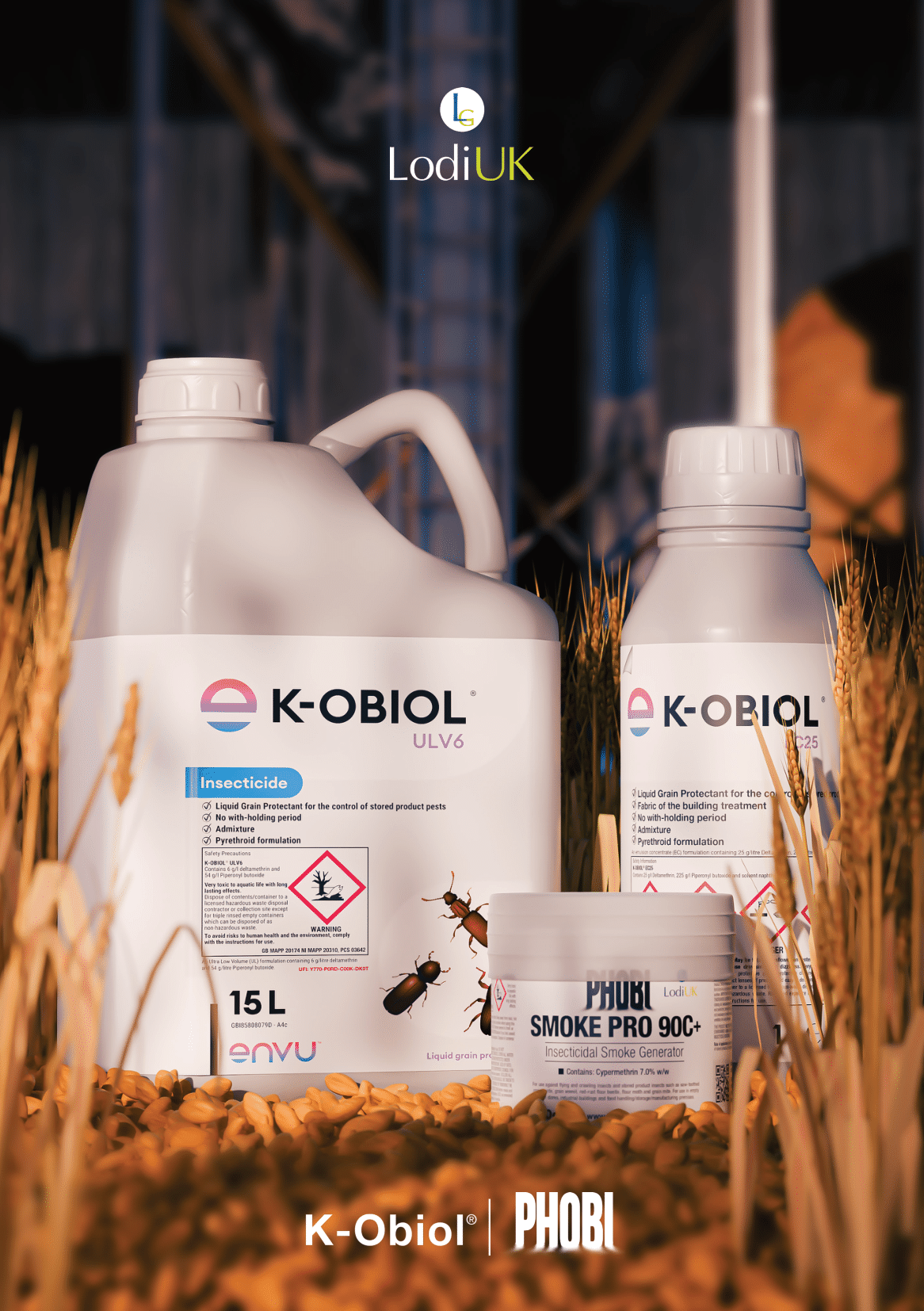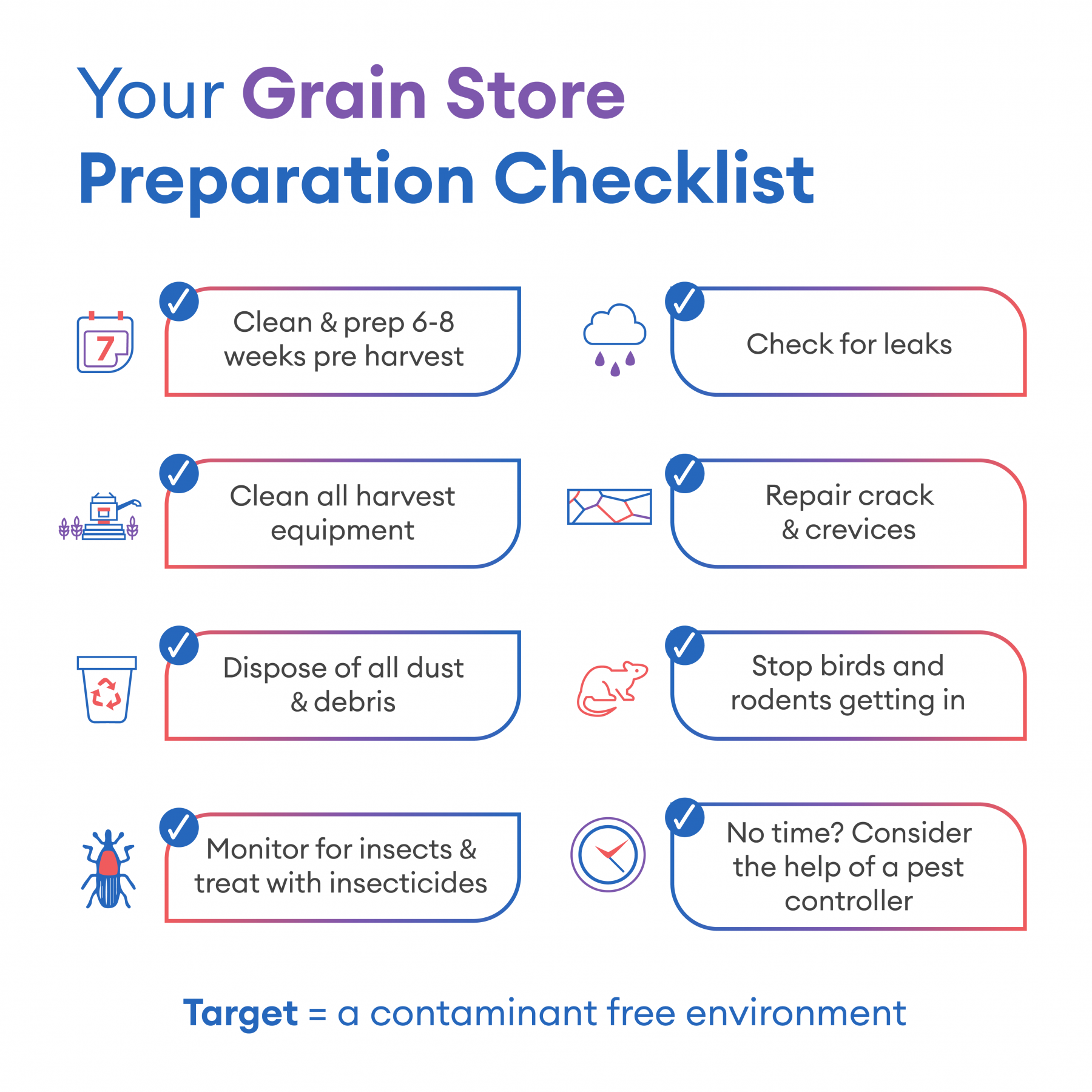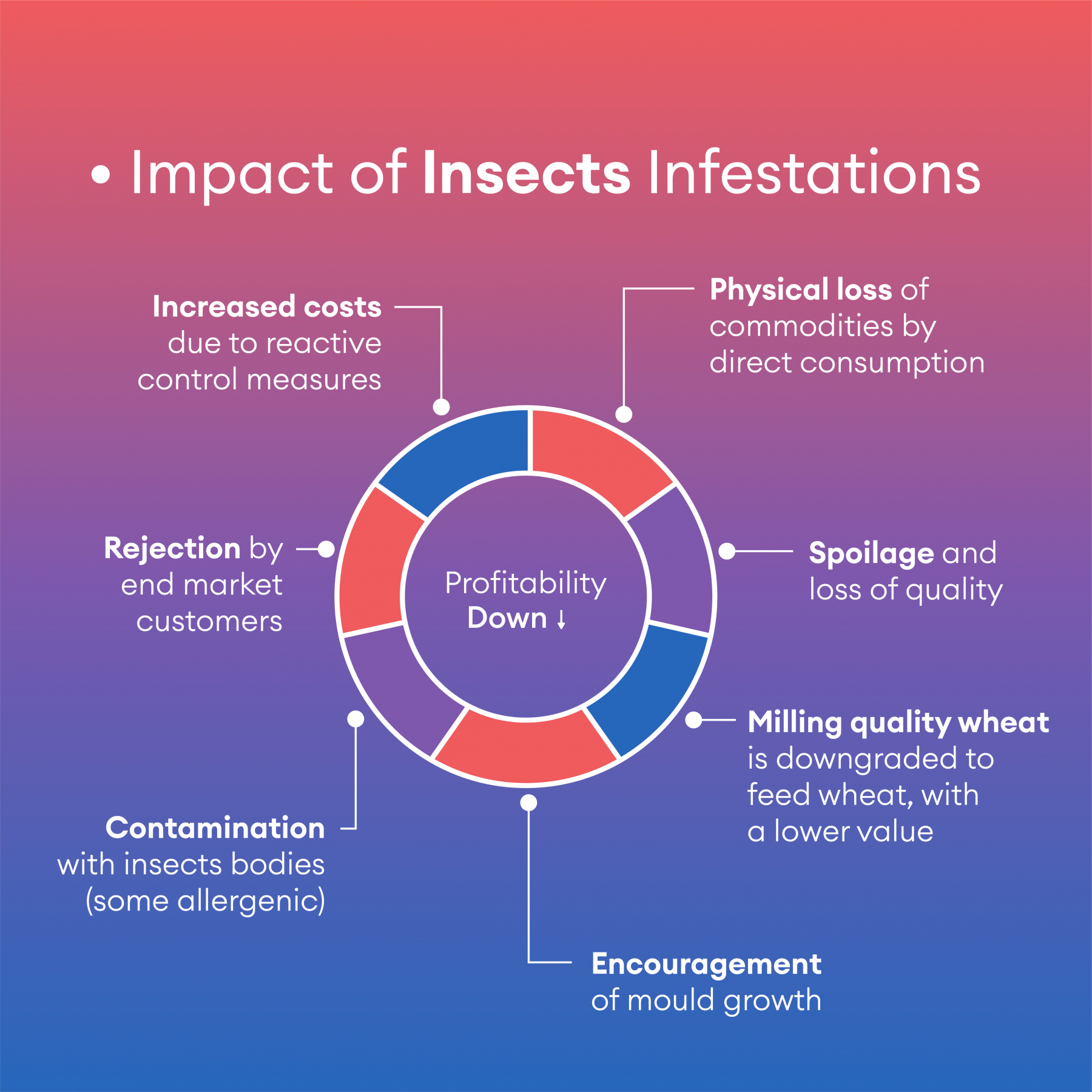
Protecting and preserving harvested grains from insects and ensuring their continued quality is a vital part of arable, cereals & agricultural farming. It's always easier said than done, but by being informed and educated on the types of insects that can negatively impact your grain and livelihood will ultimately protect your pocket.
Achieving effective pest control requires an understanding of the common insects found in grain stores and implementing best practices and targeted procedures to keep them out.
Identifying Common Grain Store Pests:
- Weevils: Sitophilus spp., including the Rice Weevil (Sitophilus oryzae) and the Granary Weevil (Sitophilus granarius), are among the most prevalent pests in grain stores. These small beetles infest stored grains, causing damage and contamination.
- Beetles: Various beetle species, such as the Red Flour Beetle (Tribolium castaneum) and the Saw-Toothed Grain Beetle (Oryzaephilus surinamensis), feed on grains, flour, and other stored products, leading to significant losses if left unchecked.
- Moths: Indian Meal Moths (Plodia interpunctella) and Mediterranean Flour Moths (Ephestia kuehniella) are common pantry pests that infest stored grains, flour, and cereal products, often causing contamination and spoilage.
- Mites: Grain Mites, including the Flour Mite (Acarus siro) and the Mold Mite (Tyrophagus putrescentiae), thrive in warm and humid conditions, proliferating in grain stores and contributing to mould growth and spoilage.
- Rodents: The Black Rat(Rattus rattus), Brown Rat (Rattus norvegicus) and Mice feast on the grains as their food source and leave their droppings, urine and hair, which lowers the grain quality and can also be a health hazard as rodents are carriers of disease. Farms with access to plenty of food enable populations to grow rapidly.

Now you have a rough idea of the types of pests that could cause damage to your grain stores, the next step is to investigate the impact of insect infestations and the consequences without the proper protection and control measures in place.

An understanding of what you need to be aware of with pest infestations and how they can negatively influence your business will help you to effectively protect your grain. Preparation is always key and the best practice advice would always be to have a clear plan of action. This foresight will be worth its weight in gold, allowing you to mitigate the chances of pest infestations occurring.
If you have ticked off your preparation checklist, you will have most likely reduced your chances of a pest infestation and you can now start to implement some best practices into your pest control grain storage routine:
- Cleanliness: Maintain proper sanitation practices in grain stores by regularly removing spilled grains, debris, and residues, as these provide food sources and breeding grounds for pests.
- Temperature and Moisture Management: Monitor and regulate temperature and humidity levels in storage facilities to discourage pest activity. Proper ventilation and airflow can help reduce moisture build-up and prevent mould and fungal growth.
- Inspection and Monitoring: Implement routine inspections of grain stores to identify signs of pest infestation, such as insect sightings, damaged grains, and webbing. Use sticky traps and pheromone traps to monitor pest populations and detect early signs of infestation.
- Integrated Pest Management (IPM): Adopt an integrated approach to pest management, combining preventive measures, cultural practices, biological control agents, and chemical treatments as needed to effectively control pest populations while minimizing environmental impact.
To protect your grain we recommend using the K-Obiol product range; K-Obiol EC25 can be used to treat the storage area prior to intake of Cereals; K-Obiol ULV can be applied directly to the grain as it enters the stores or straight off the combine providing up to 12 months of protection.
Key Products and Their Features:
- K-Obiol EC25: This liquid insecticide contains the active ingredient deltamethrin, a potent insecticide effective against a broad spectrum of pests such as weevils, beetles, and moths. Can be used for both the fabric of the building treatment and as an admixture for application directly onto the grain. No with-holding period and unrivalled efficacy against the most common grain store insects.
- K-Obiol ULV6: This ultra-low volume formulation is optimized for space treatment applications, offering rapid knockdown of adult insects and preventing their reproduction. With its fine particle size, it ensures thorough coverage in storage facilities, reaching even the most inaccessible areas. No with-holding period after treatment, a single admixture treatment can provide protection for up to 12 months.
- For best results, we recommend using the K-Obiol ULV6 Spray Application Equipment: This portable unit is comprised of a pump mounted on a stainless steel frame which fits directly onto the K-Obiol ULV6 15L Container.
For the complete stored grain pest control package we also suggest Lodi UK's Phobi Smoke Pro 90C+. With 100% efficiency in the control of grain store pests, this acaricide/insecticide is proven protection. Simply light the wick and place into empty grain storage facilities, the smoke will reach every nook and cranny where insects may hide and burrow.
Conclusion:
In a world where food security and quality are paramount, the K-Obiol Grain Protection range stands as a beacon of innovation and reliability. With its effective formulations, versatile applications, and commitment to sustainability, K-Obiol continues to empower farmers across the agricultural value chain, ensuring the safe storage and preservation of grains for generations to come.





